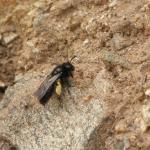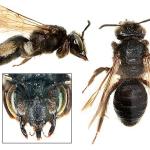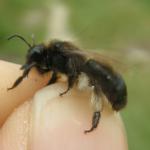This species is the commoner of the two formerly known as A. pilipes or A. carbonaria. It has a double flight period, unlike its close relative A. nigrospina Thomson. Modern records of A. pilipes sens. str. are mostly coastal, where it can be quite frequent and certainly very obvious. Why this should be is not clear as it visits a wide range of plants for their flowers.
Southern England.
It is widely distributed in Europe and North Africa.
As the split in the two species post-dates both the Red Data Book (Shirt, 1987) and the
Review (Falk, 1991) this species is not currently listed. It is clear, however, that its status
should be reviewed.
Whilst it is now largely associated with coastal habitats there are confirmed records for inland localities.
Bivoltine; April to May, and July to August.
Nests in aggregations in vertical bare soil, typically near the tops of cliffs.
Visits a very wide variety of flowers including species within Apiaceae, Asteracea, Brassicaceae, Fabaceae and Rosaceae.
Nomada fulvicornis Fabricius has been recorded as a cleptoparasite of A. pilipes. It has also been recorded as being attacked by the conopid fly Myopa buccata (Linnaeus), but this is unlikely to be a specific host association.
2012




